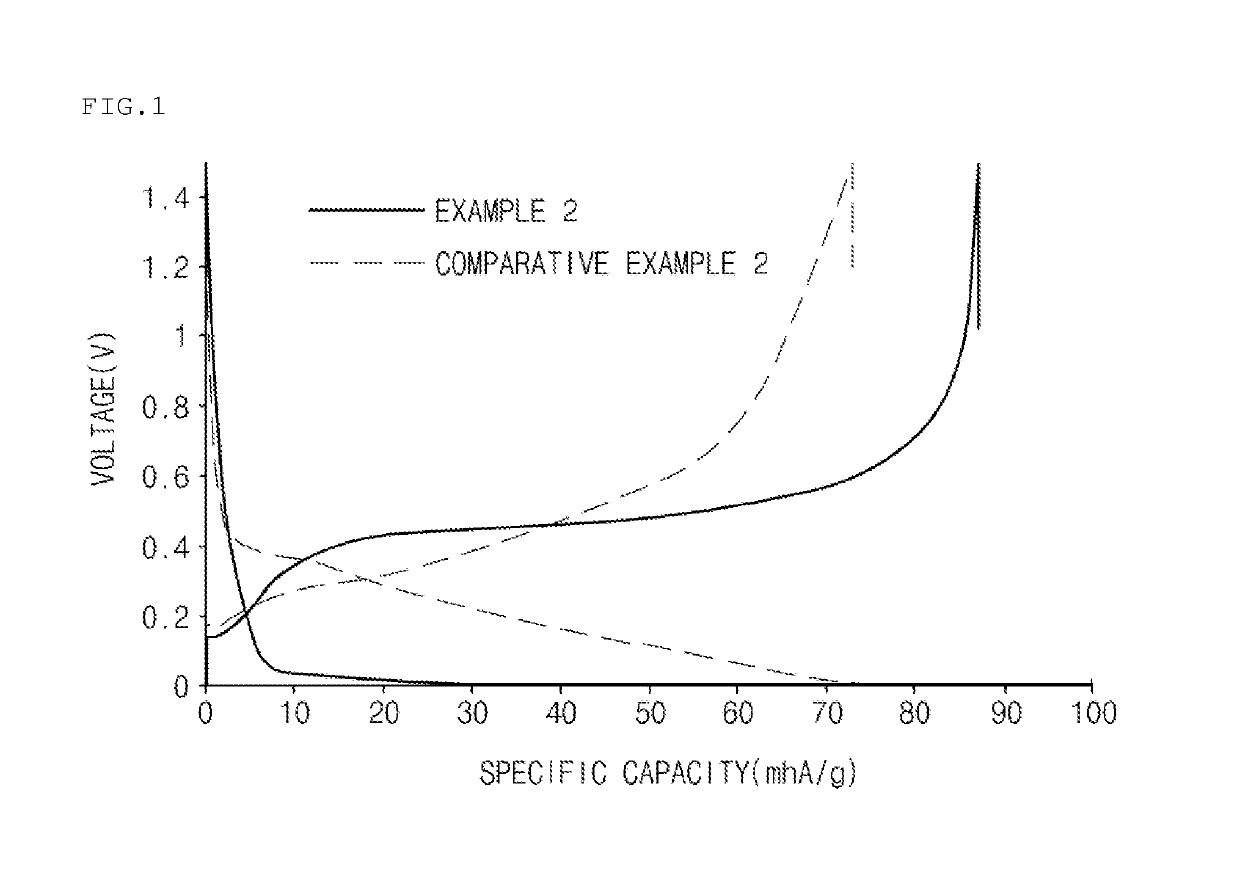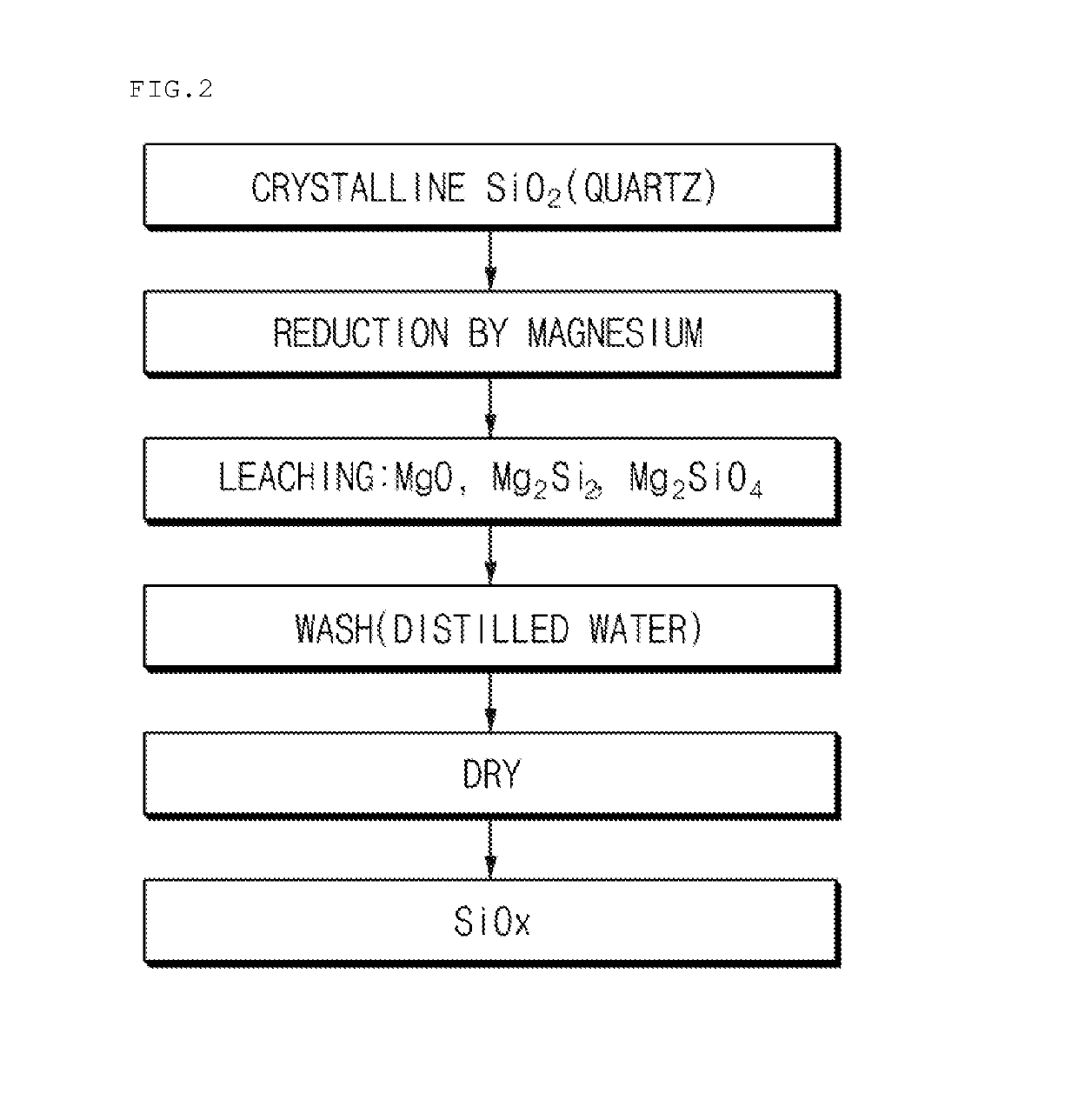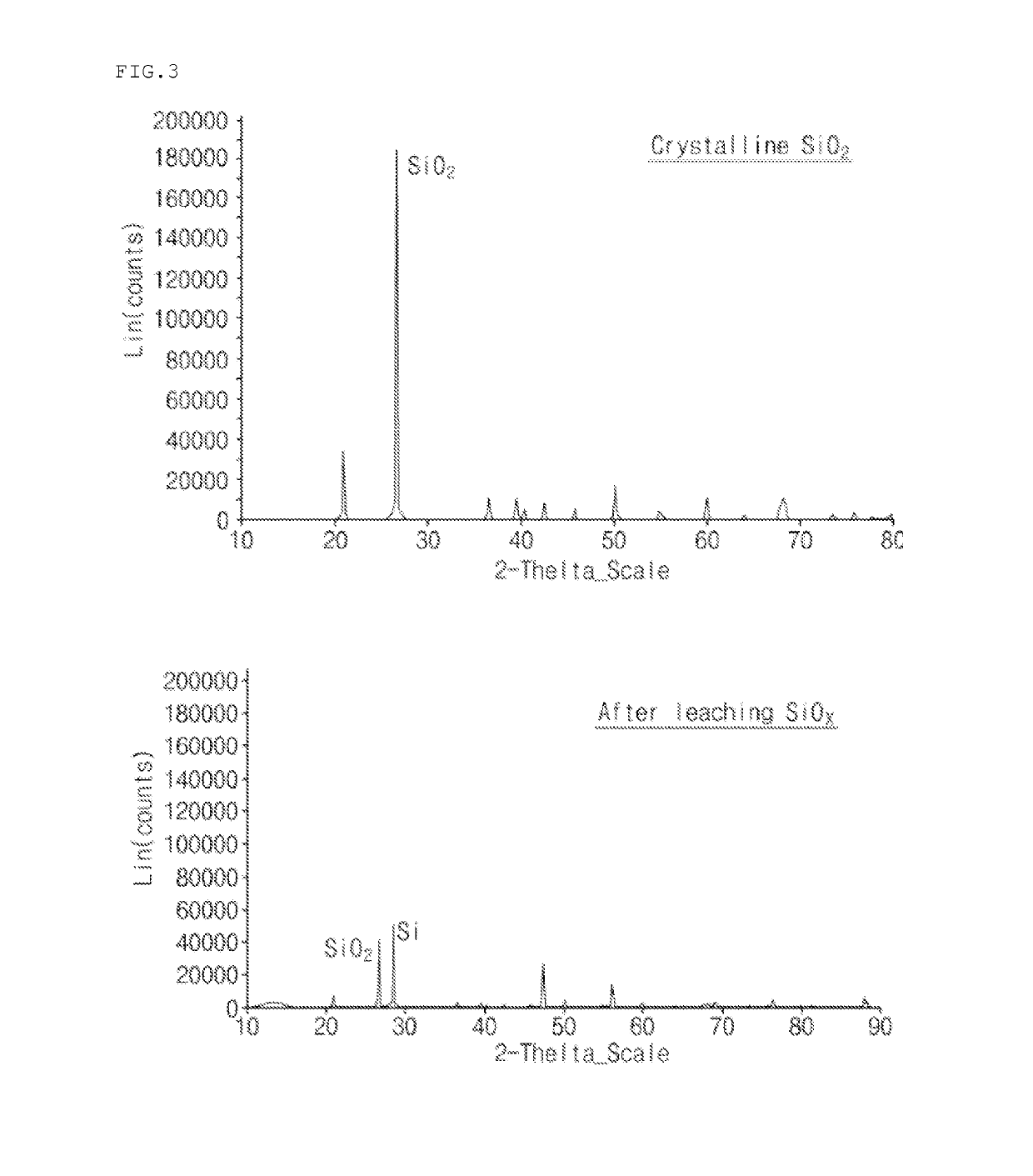Anode active material for lithium secondary battery and method of preparing the same
a lithium secondary battery and active material technology, applied in the field of anode active material for lithium secondary batteries, can solve the problems of low capacity per unit mass of graphite, difficulty in preparing high-capacity lithium secondary batteries using graphite, volume expansion and contraction, etc., and achieve excellent capacity characteristics of secondary batteries. , the effect of improving initial efficiency and life characteristics
- Summary
- Abstract
- Description
- Claims
- Application Information
AI Technical Summary
Benefits of technology
Problems solved by technology
Method used
Image
Examples
example 1
[0063]100 g of crystalline SiO2 powder and 41 g of Mg powder as a metal reducing agent were mixed and then put in a reaction vessel of a thermal reduction chamber. Subsequently, the temperature of the chamber was increased to 570° C. Thereafter, Ar was used as an inert gas, and Ar was supplied at a flow rate of about 800 sccm. Also, the reaction was performed using a rotary kiln as the reaction vessel. The thermal reduction reaction was performed for 8 hours, and after 8 hours, the chamber temperature was decreased to room temperature. A product in the reaction vessel was collected to prepare a silicon-based composite. Reduced MgO or the like was removed from the prepared silicon-based composite using HCl (1N). In this case, scanning electron microscope (hereinafter, referred to as “SEM”) images of the prepared silicon-based composite are presented in FIG. 4.
example 2
[0066]The silicon-based composite prepared in Example 1 as an anode active material, acetylene black as a conductive agent, and polyvinylidene fluoride as a binder were mixed at a weight ratio of 95:1:4 and the mixture was mixed with a N-methyl-2-pyrrolidone solvent to prepare a slurry. One surface of a copper current collector was coated with the prepared slurry to a thickness of 30 μm, dried and rolled. Then, an anode was prepared by punching into a predetermined size.
[0067]10 wt % fluoroethylene carbonate based on a total weight of an electrolyte solution was added to a mixed solvent, which includes 1.0 M LiPF6 and an organic solvent prepared by mixing ethylene carbonate and diethyl carbonate at a weight ratio of 30:70, to prepare an non-aqueous electrolyte solution.
[0068]A lithium foil was used as a counter electrode, a polyolefin separator was disposed between both electrodes, and a coin-type half cell was then prepared by injecting the electrolyte solution.
experimental example 1
surement
[0070]In order to investigate initial discharge capacities of the coin-type half cells prepared in Example 2 and Comparative Example 2, the coin-type half cells were charged at 0.1 C to a voltage of 4.2 V under constant current / constant voltage (CC / CV) conditions and charged to a current of 0.005 C under a constant current (CC) condition at 25° C. in the first cycle. After the coin-type half cells were left standing for 30 minutes, initial discharge capacities were measured by discharging the cells at 0.1 C to a voltage of 3 V.
[0071]Also, in order to investigate initial efficiencies of the coin-type half cells prepared in Example 2 and Comparative Example 2, the coin-type half cells prepared in Example 2 and Comparative Example 2 were charged at 0.1 C to a voltage of 5 mV and charged to a current of 0.005 C at 5 mV under constant current / constant voltage (CC / CV) conditions at 23° C., and then discharged at 0.1 C to a voltage of 1.5 V under a constant current (CC) condition t...
PUM
| Property | Measurement | Unit |
|---|---|---|
| diameter | aaaaa | aaaaa |
| particle diameter | aaaaa | aaaaa |
| temperature | aaaaa | aaaaa |
Abstract
Description
Claims
Application Information
 Login to View More
Login to View More - R&D
- Intellectual Property
- Life Sciences
- Materials
- Tech Scout
- Unparalleled Data Quality
- Higher Quality Content
- 60% Fewer Hallucinations
Browse by: Latest US Patents, China's latest patents, Technical Efficacy Thesaurus, Application Domain, Technology Topic, Popular Technical Reports.
© 2025 PatSnap. All rights reserved.Legal|Privacy policy|Modern Slavery Act Transparency Statement|Sitemap|About US| Contact US: help@patsnap.com



